Dans la même rubrique
-
Partager cette page
Archontiko
The West Necropolis of Archontiko near Pella (WeNArP) Project
The ancient settlement at Archontiko, perhaps the site of “Tyrissa” of written sources, is located about 5 km to the northwest of Pella (Fig. 1), in modern Greek central Macedonia and within the region of ancient Bottiaia, which once lay at the core of the Macedonian kingdom. Rescue excavations that were carried out to the west of the settlement in the 2000s by the Greek Archaeological Service, under the direction of Dr P. Chrysostomou and Dr A. Chrysostomou, brought to light an extensive cemetery (Fig. 2), the use of which began before the foundation of the kingdom and persisted beyond the eclipse of its first dynasty, the Temenids (or Argeads). The 1001 graves of the West Necropolis that were excavated date from the Early Iron Age to the beginning of the Hellenistic period, and their inventories form one of the wealthiest, in terms of quantity and variety, archaeological assemblages that are known from the entire Aegean. Particularly burials from the 6th BC, during which several individuals were literally covered in gold, have attracted international scholarly attention and they keep on amazing visitors at the Archaeological Museum of Pella, where some among them are on permanent display (Fig. 3). Given its size, its longevity and the wealth of its finds, the West Necropolis offers an ideal opportunity for a high-resolution and diachronic study not only of Macedonian material culture but also of the Macedonian society and its social, economic and political structures. Thus in 2022, Vivi Saripanidi (CReA-Patrimoine, ULB), Anastasia Chrysostomou and Pavlos Chrysostomou (Archaeological Service of the Hellenic Ministry of Culture and Sports) launched a project that aims at the complete study and publication of the site.
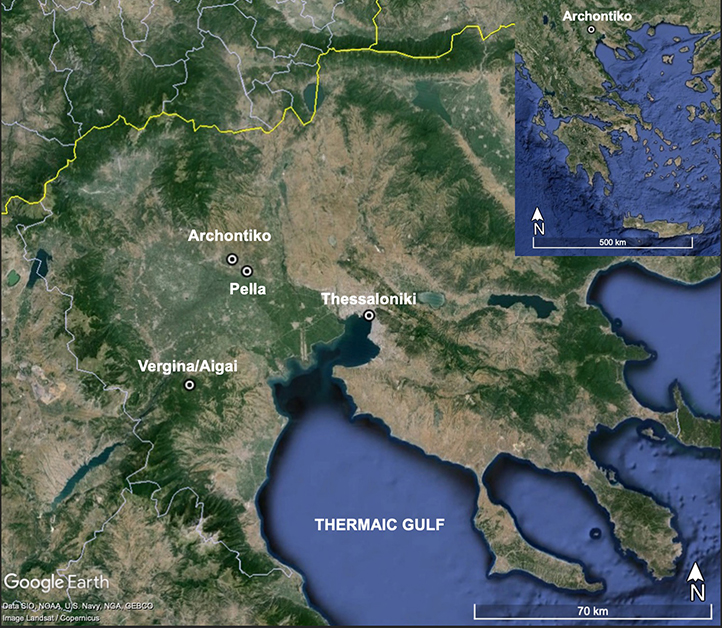 |
| Fig. 1. Map of modern Greek central Macedonia. |
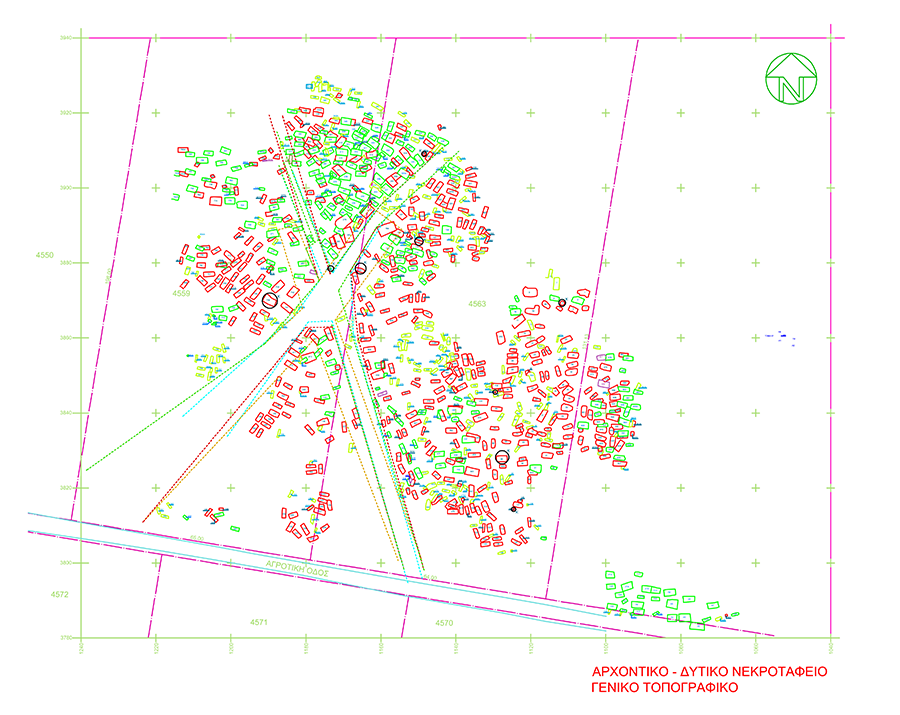 |
| Fig. 2. Plan of the West Cemetery of Archontiko. |
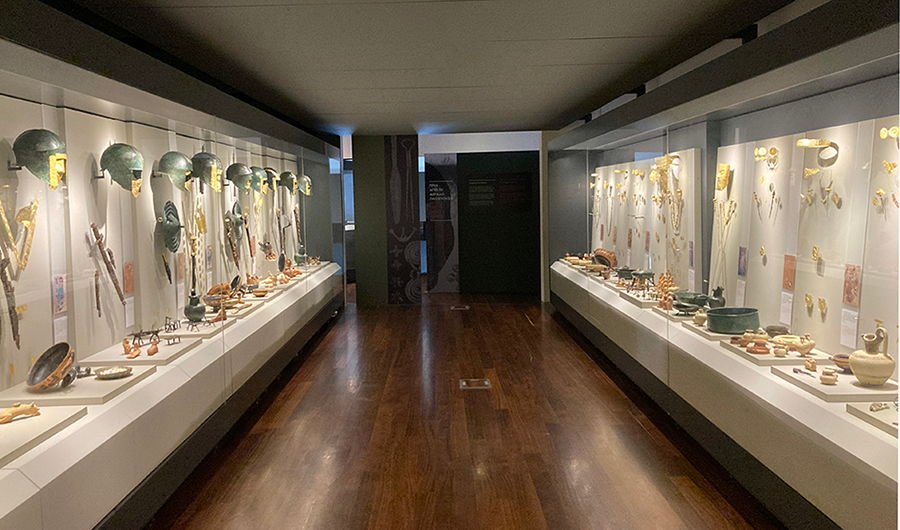 |
| Fig. 3. Finds from the West Cemetery of Archontiko exhibited at the Archaeological Museum of Pella. |
Adopting a holistic and multidisciplinary approach, the project involves:
- The typological and technological study of the graves and their artifactual inventories. So far, our team of specialists in this aspect includes P. Chrysostomou and E. Chrysostomou (weapons), A. Chrysostomou (other metal artifacts), Prof C.W. Neeft, ULB (Corinthian pottery), V. Saripanidi (local, East Greek, Attic, Euboean and Boeotian pottery, glass and faience vessels), Dr B. Dimova (textile tools and textile remains) and Dr A. Kyriakou (figurines).
- Archaeometric analyses of pottery that are being carried out at the Laboratory of Archaeometry at the ATHENA Research and Innovation Center at Xanthi, under the direction of Dr N. Tsirlinganis.
- Archaeometric analyses of metal artifacts, undertaken by Dr N. Nerantzis at the Laboratory of Archaeometry at the University of the Peloponnese.
- Organic residue analyses that are undertaken by Dr M. Roumpou at the Foundation for Research and Technology – Hellas (FORTH) and the Harokopio University at Athens.
- Radiocarbon dating of bone samples, performed at the Curt-Engelhorn-Center of Archaeometry in Mannheim.
- The study of the skeletal remains by Prof. C. Papageorgopoulou and her team at the Laboratory of Physical Anthropology at the Democritus University of Thrace. This study, which aims at the thorough investigation of the demography, the diet, the paleopathology and the mobility of the population of Archontiko, includes nitrogen, carbon and strontium isotopic analyses and, at a later phase, it will also integrate paleogenomic studies.
- Spatial analysis of the site and multivariate statistical analyses of the evidence from the graves, carried out by Prof. S. de Valeriola and Prof. C. Engelbeen (ULB).
Aside from research, the project involves works of conservation and restoration (M. Papadopoulou), the drawing of artifacts (A. Stoll, ULB) and their photographic documentation (The Great Darkroom Experience).
In order to make the evidence from this unique burial site readily accessible to the scientific and the wider public, the project has opted for a hybrid publication. The primary evidence will be presented in an open access, interactive and searchable, digital publication that is being prepared in collaboration with Dr. A. Schenkel and H.-L. Guillaume (PANORAMA platform, ULB). The synthetic chapters on the local funerary practices and the regional and historical context of the site will be presented in a series of printed volumes, which will appear in the series Études d’archéologie of the CReA-Patrimoine.
Thanks to an FER research grant by ULB and two Crédits pour séjour à l’étranger by the Fonds National de Recherche Scientifique (FNRS) of Belgium, in 2022 and 2023 our team carried out the study of the graves from the first chronological phase of the cemetery, which spans the period from the Early Iron Age to the early 6th BC (Fig. 4). While we are currently preparing the publication of this phase, in 2024 we also began the study of the second – and wealthiest – chronological phase, which corresponds to the years between ca. 570 and 490 BC (Figs. 5-6). The continuation of our project was made possible thanks to a PDR grant by the FNRS [project Le royaume macédonien sous les premiers Téménides (vers 570-490 av. J.-C.): les données de la nécropole oust d’Archontiko, 2024-2028]. Upon the completion of this phase, we will proceed to the study and publication of the third and last chronological phase of the cemetery. The realization of the project would not have been possible without the support of the staff of the Archaeological Museum of Pella and especially of the museum’s director, Dr Elissavet Tsigarida (Ephorate of Antiquities of Pella). For assisting us in all possible ways, we wish to thank all of them warmly.
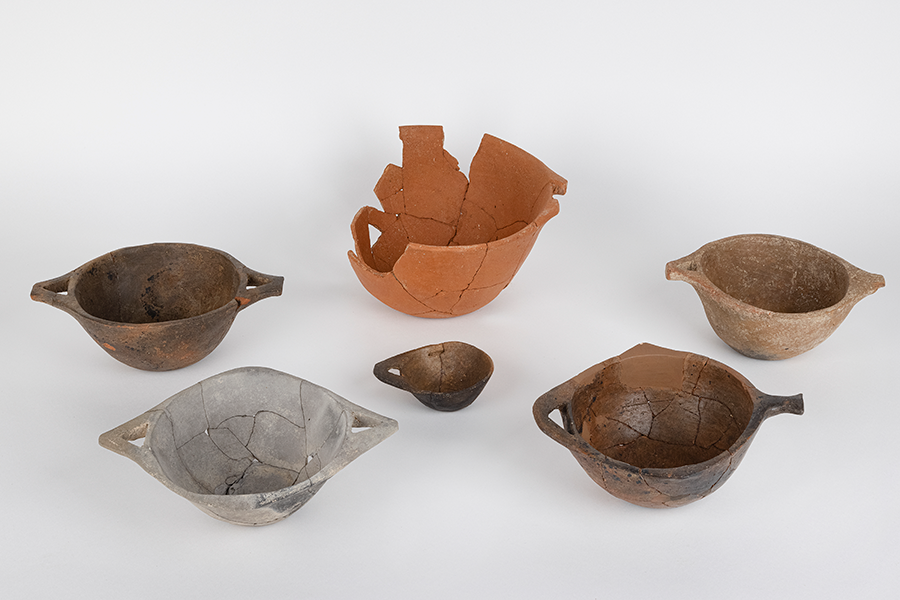 |
| Fig. 4. Local handmade pottery found in graves from the first chronological phase (10th-early 6th c. BC). |
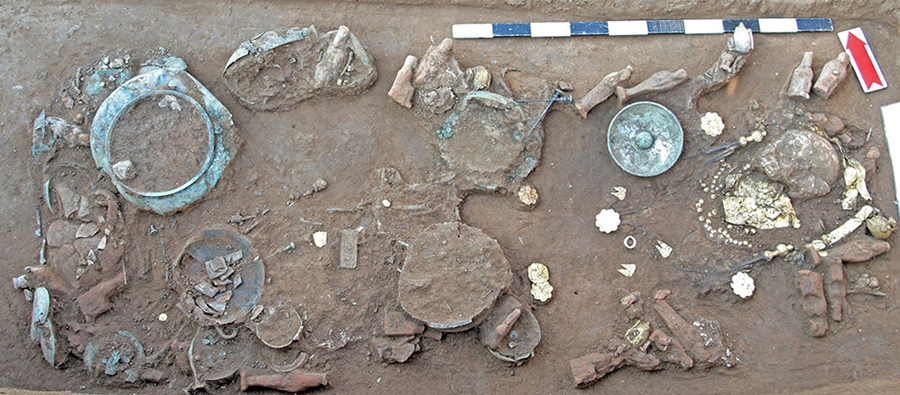 |
| Fig. 5. Grave 458, ca. 530 BC. |
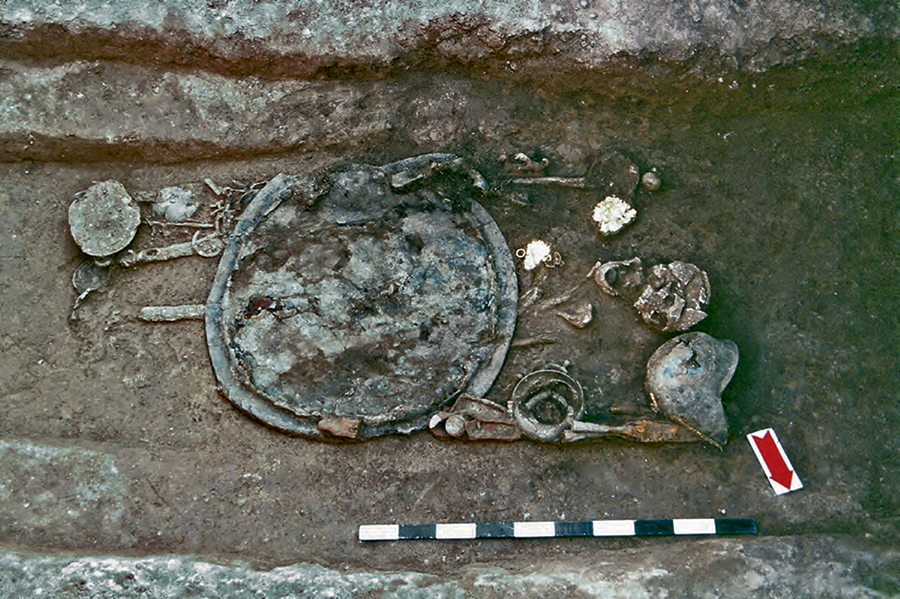 |
| Fig. 6. Grave 131, ca. 520 BC. |
Overviews of the finds from the West Necropolis of Archontiko
- A. Chrysostomou – P. Chrysostomou, “The Ancient Settlement of Archontiko”, in M. Lilibaki-Akamati et al., The Archaeological Museum of Pella, Athens 2011, 299-389. (https://www.latsis-foundation.org/content/elib/book_18/pella_en.pdf).
- A. Chrysostomou – P. Chrysostomou, “The ‘Gold-Wearing’ Archaic Macedonians from the Western Cemetery of Archontiko, Pella”, in M. Tiverios et al. (eds), Threpteria. Studies on Ancient Macedonia, Thessaloniki, 2012, 490-516. (https://www.academia.edu/35248566/The_Gold_Wearing_Archaic_Macedonians_from_the_Western_Cemetery_of_Archontiko_Pella).
